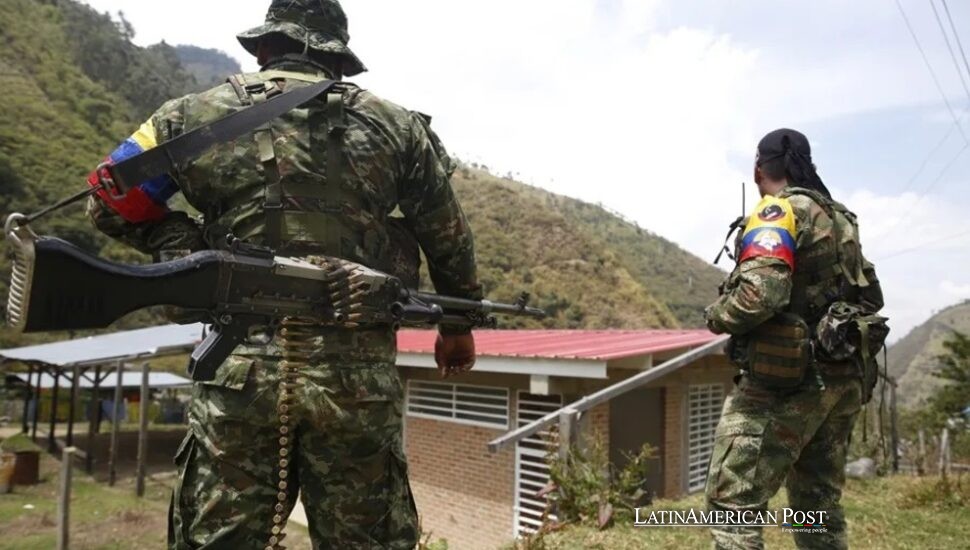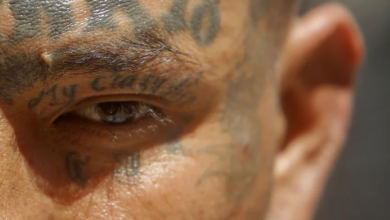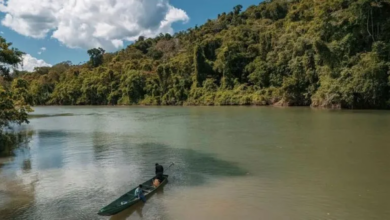Colombia Faces Parallel States as Guerrillas Govern Neglected Amazon Borderlands

On the San Miguel River, where the water itself marks the frontier with Ecuador, a guerrilla commander nicknamed Popéye pushes his boat toward a waiting unit of fighters. In fatigues and rubber boots, rifle slung across his shoulders, he carries not just weapons but the burden of fragile negotiations. As coca fields expand to record levels and Washington grows impatient, Colombia’s narrow peace path now runs directly through the Amazon’s contested, criminalized borderlands.
A river crossing, a deadline
The motor hums over the muddy water as Jairo “Popéye” Marín, commander of the Comandos de la Frontera, steers into the current. Earlier this year, the Amazon-born guerrillero became the chief negotiator of his group, which brands itself a “21st-century guerrilla organization” and dominates coca zones in Colombia’s far south.
“We control many things, yes, things that the State with its military and police forces cannot do. We can do it,” Marín told TIME near the Colombia-Ecuador border. His words capture the paradox that confronts President Gustavo Petro: the state is sitting at the table with those profiting most from the war economy.
The calendar is merciless. Petro has less than a year to secure deals that could complement broader peace talks and underpin his anti-narcotics strategy.
eanwhile, coca cultivation surged to 625,000 acres in 2023, an all-time high. The U.S. has threatened to slash military aid and even decertify Colombia for failing to meet counter-drug benchmarks, a move that could also jeopardize international loans. As TIME reported, the path to de-escalation may require engaging, not simply fighting, the armed groups that police movement, mete out justice, and tax commerce across the Amazonian borderlands.
Parallel states in the Amazon
Colombia’s conflict has shed its old ideological skin. What began in the 1960s as a Marxist insurgency has become a mosaic of criminal enterprises run by ex-FARC fighters, paramilitary remnants, former soldiers, and fresh recruits—many drawn from Indigenous communities seeking security and steady pay.
The Comandos de la Frontera epitomize that transformation: roughly 1,200 fighters spread across Putumayo and neighboring frontiers, where coca carpets more than 123,000 acres. From these fields, cocaine flows west to Pacific ports in Colombia and Ecuador, and east along rivers into Brazil, both a consumer hub and a springboard to Africa and Europe.
In practice, state and non-state actors function as parallel governments. Local leaders describe the Comandos’ “suffocating” control—recruiting minors, enforcing disappearances, carrying out targeted killings—while official authorities remain absent or distrusted. “The enemy had gotten into our house and we didn’t realize it,” one Indigenous leader told TIME, requesting anonymity for safety.
The Comandos cast their dominance as “regionalist,” a grassroots response to abandonment. They regulate trade, escort shipments, enforce rough justice, and repel rivals. And now, they also negotiate with Bogotá.
From demobilization to a new machine
The 2016 peace accord with the FARC disarmed Colombia’s largest insurgency. But the vacuum it left proved deadly: more than 500 ex-combatants were murdered in the years that followed. “We’re going to unite, we’re going to begin, we’re going to arm ourselves because we cannot let ourselves be killed,” Marín recalled to TIME, describing how 16 ex-fighters regrouped in 2017 and, by 2020, formalized the Comandos de la Frontera.
Today, the group insists it has a political agenda it calls “territorial transformations.” Leaders claim they would abandon coca, demobilize, and disband if the state provided land titles, infrastructure, and guarantees for their security. That offer tests the core of Petro’s “Total Peace” strategy: can Colombia negotiate credible exits from illicit economies with the same actors who thrived on them?
Government negotiators argue that the only lasting solution is economic. “At least in the dialogues with [the Comandos], we have agreed on the need to overcome the predominance of illegal economies linked above all to coca and illegal mining in those territories,” said Armando Novoa, a lawyer representing Bogotá, in an interview with TIME. This transformation, he added, requires “an intelligent public security presence in the territory,” not “armed repression against communities to counter coca cultivation.”
Substitution, markets, and a closing window
Farmers in Putumayo describe coca as both a lifeline and a trap. Many sell coca paste directly from makeshift labs on their plots, with buyers arriving at the farm gate with cash in hand. “Coca brings violence, deaths, all kinds of problems, you know? So that’s also why we want to start transforming things,” one farmer told TIME, requesting anonymity. But legal alternatives—coffee, cacao, fruit—face stacked odds: bad roads that turn produce to pulp, no land titles, no credit.
Colombia has tried substitution before, often with poor results: inconsistent funding, slow bureaucracy, and projects disconnected from local needs. Gloria Miranda, the government’s substitution director, told TIME that this cycle will be different because drug policy and Total Peace are aligned. “The state must recover control through more than just armed force,” she said. “Military power is only one dimension. We’re building a legitimate presence through social policies and non-violent means.”
Crucially, Miranda noted, the Comandos are not obstructing substitution in their territories—a rare opening. “The armed group is willing to let the program proceed without confrontation, violence, or threats,” she said.
Yet time is short. Petro needs results visible to Colombians before the 2026 elections. Small pilot projects must scale quickly in regions where illegal gold mining fattens the same war economy as cocaine. And if U.S. decertification proceeds, hundreds of millions in security assistance could evaporate, weakening interdiction just as traffickers diversify their routes.
The Comandos know the calendar, too. “If we don’t reach at least some minimum agreements, some partial agreements, well, we’ll go as far as we can [in the process],” Marín told TIME, hinting that talks could continue even under a more hardline successor.
Also Read: Argentina Visa Surprise Spotlights West Wing Choreography and Growing Pains
By the San Miguel’s muddy seam, Popéye fidgets with his rifle. “Our policy since we were formed is that we are not going to attack the state,” he said. “But if they attack us, we’ll defend ourselves.” Between those two lines—restraint and reprisal—lies Colombia’s last, narrow corridor to de-escalation. Whether the state can pave that corridor with schools, markets, and courts before the clock runs out will decide if this border becomes a passage of possibility or another trench of war.




